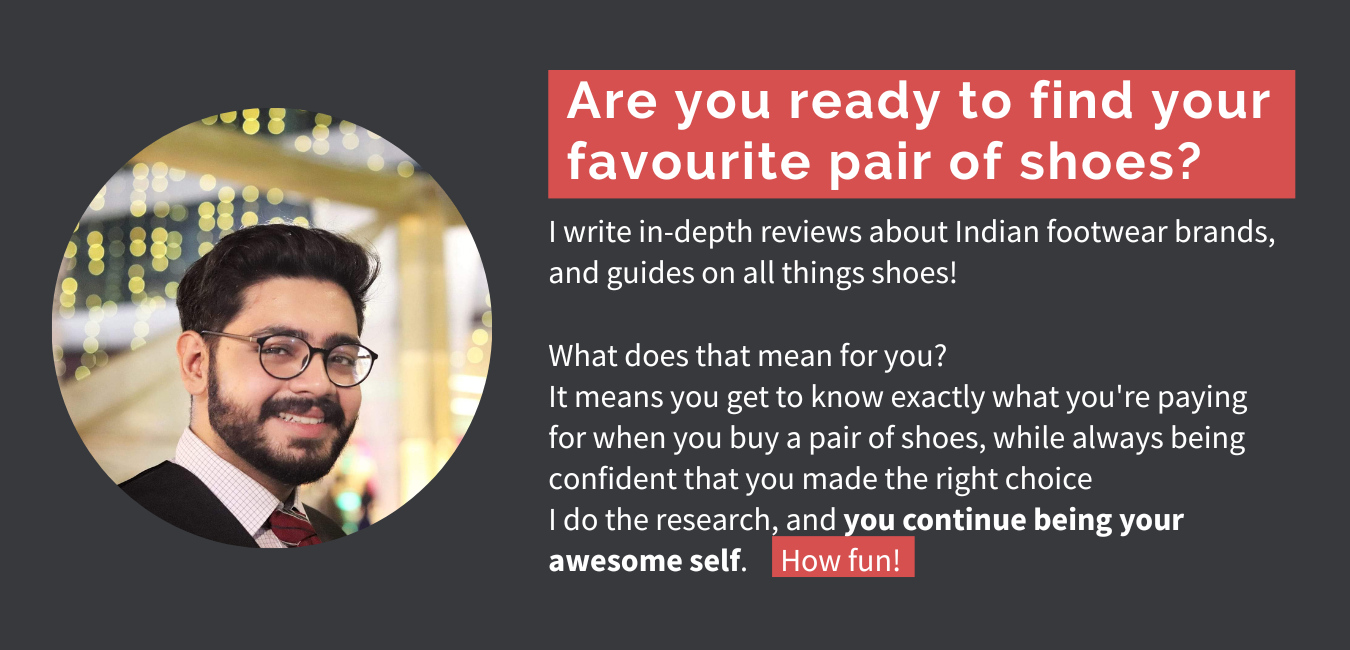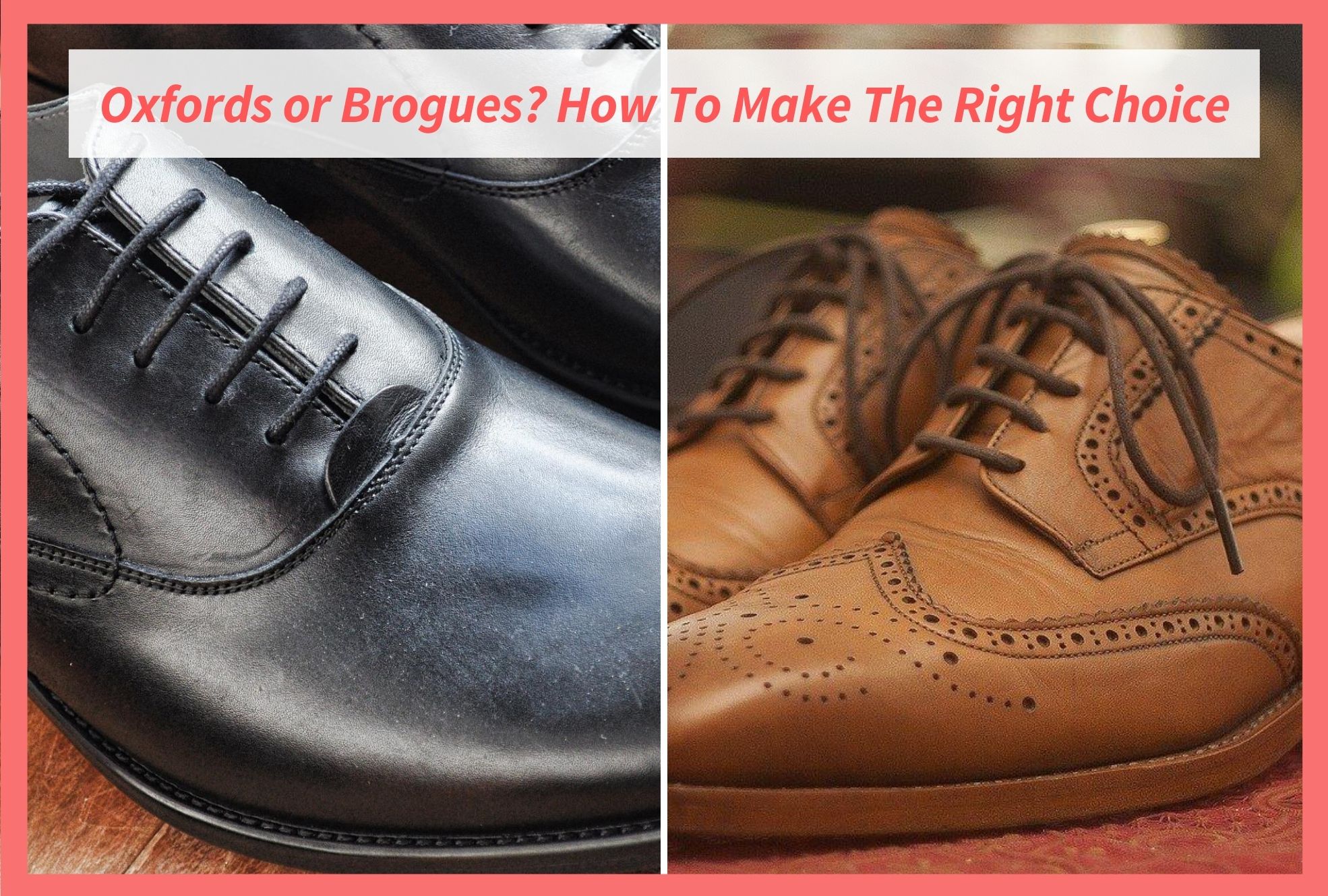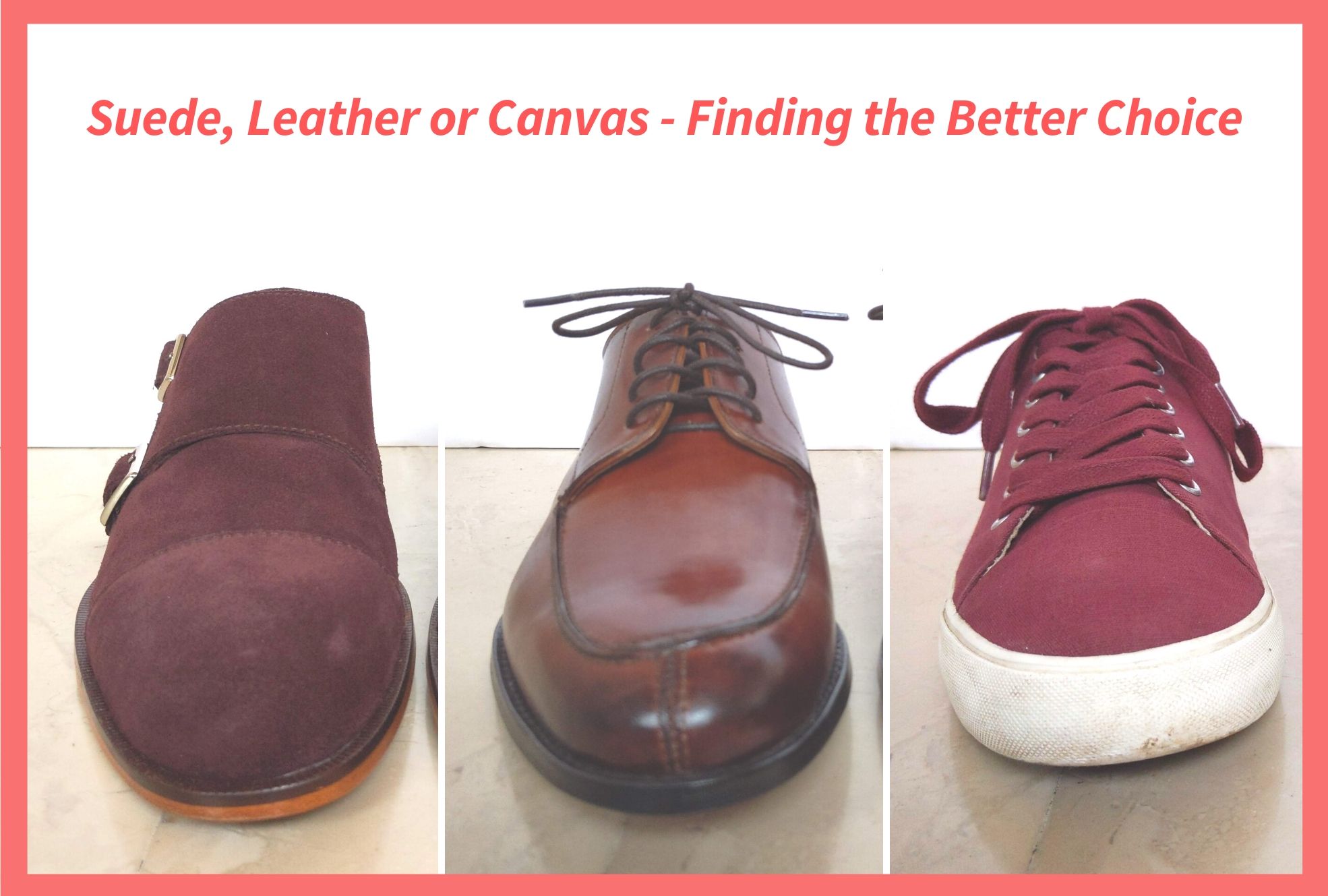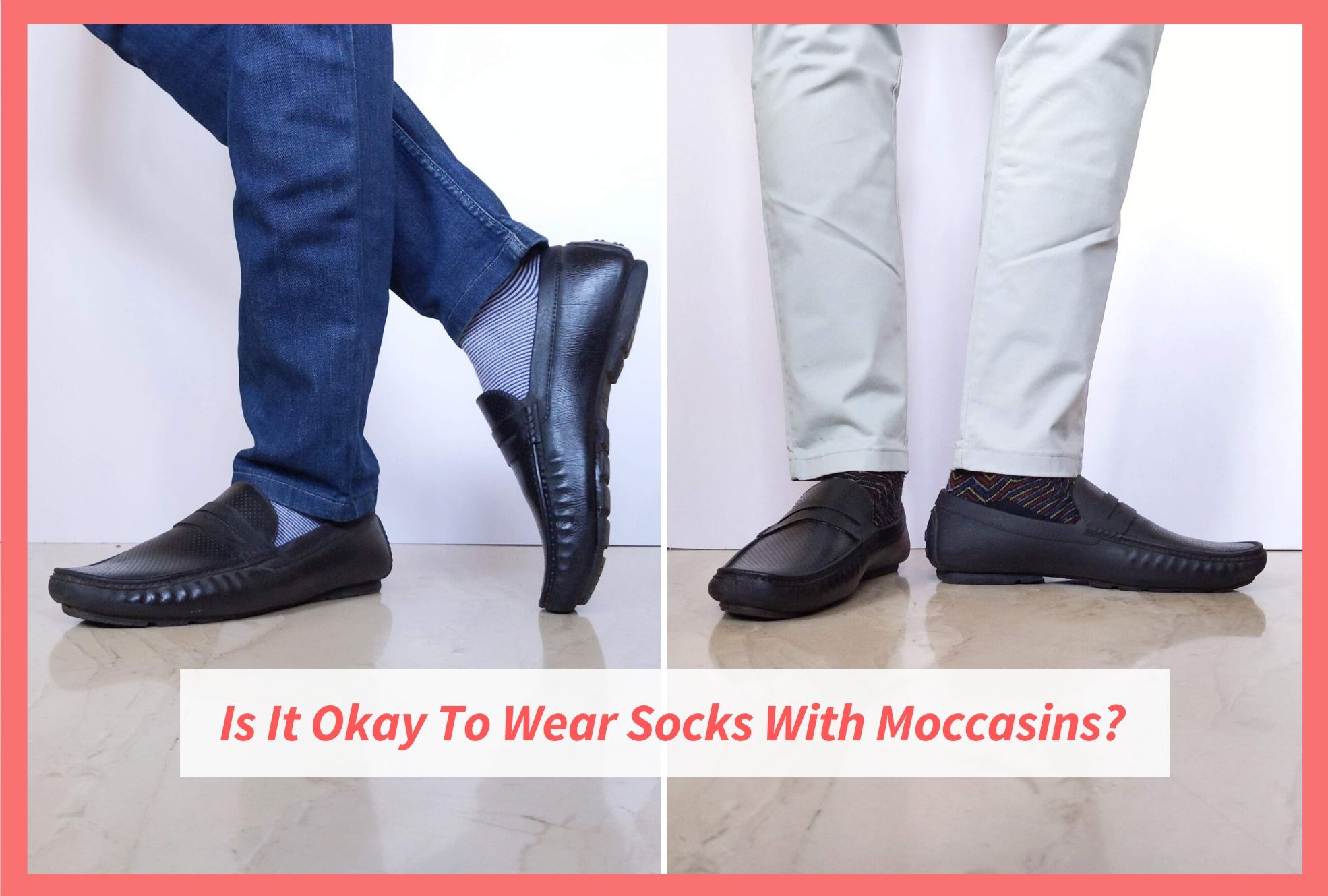Shoes. Shoes. So many shoes!
If you’re just beginning your journey of owning and wearing good quality shoes, then I’m here to help you!
If you’re already on that path, Congratulations! Let’s grow together, shall we?
With plenty of brands producing and selling shoes today, we’re spoilt for choices. And too many choices bring confusion, and often deceit, with it. So if you’re out on the market looking to buy dress shoes, what things should you check to ascertain their quality? How will you identify if a pair of shoes is worth its cost just by looking at it?
The shoe quality checklist below will answer all those questions for you 🙂
Follow these tips and assure yourself of your next buy, or use them to verify the quality of the ones you already own.
1) Natural and Lively Leather Upper
You would want the upper of the shoe to feel smooth and look natural, not synthetic and lifeless. I’ve found smell to be a very good indicator of this – real natural leather smells very different from synthetic ones.
This one is a bit of learning curve – you’ll have to look at a lot of shoes of various qualities before you are able to judge by sight alone – but there are still things you can notice that will help the decision even without that experience.
When we talk about the quality of leather upper, the grain of the leather (i.e. the layers of the animal hide used) immediately comes to mind
- Full-grain leather is the highest quality of leather. Shoes made of such leather will use the entire upper layer of the hide as it is, without any corrections
- Top-grain leather comes next in quality, which is simply full-grain leather that’s been sanded to remove any surface imperfections
- Once the top layers have been taken off for higher quality leathers, the layers that remain can be called as corrected-grain / genuine leathers. These are buffed/sanded and chemically treated to give a smooth finish
Look for:
- Check if the brand mentions the kind of leather they have used for the shoes. Most manufacturers are usually discreet about this, since they might have internal processes in place to ensure their costs stay balanced.
- If the skin pores are visible on the leather up close, then it is likely to be made of full-grain leather.
Pro tip: You can use zoom-in using your mobile camera to check this
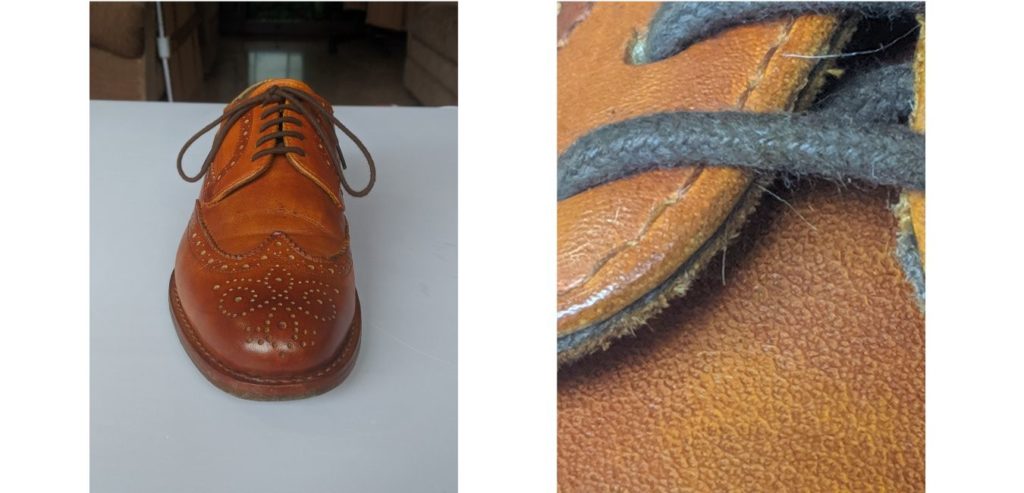
Notice how you can see the pores up close (Right)
- The absence of the pores would mean that the outer side of the hide has been buffed, which makes it either top-grain or corrected grain. Generally, corrected-grain leather shoes will have a slightly plastic and unnaturally smooth look due to the chemical treatment they undergo
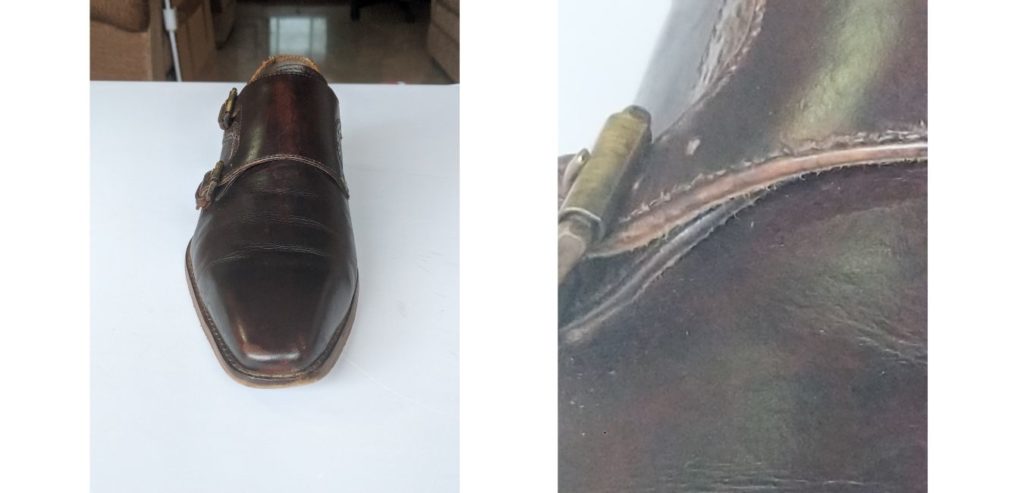
I’m not sure which type of leather this is, but it is definitely not full-grain
Avoid:
- Faux / Synthetic leather shoes
These look completely unnatural, don’t feel as good, and fail to provide any of the benefits that real leather offers. The only exception would be if you want a pair of shoes for the rains, as faux leather will be waterproof – but other than that I would not recommend such shoes - Brands that tag their products as ‘Genuine leather’
The ‘Genuine leather’ tag has been misused by industry for a while now. This is because the term can be used to mean two different things – genuine as in real or natural leather, and another name for corrected-grain leather. GodboleGear has an informative article about you should be skeptical about this tag.
Unfortunately, most mass-produced shoes I’ve come across online are tagged like this. If you find yourself in this situation, it would be best to clarify with the seller or use the other checks to decide whether to buy the shoe or not
Full-grain leather shoes will be of the highest quality, but you shouldn’t consider that to be the only characteristic to judge a shoe by. After all, we’re looking for something that ticks all the boxes of quality, and that means that the other grades (Top and corrected grain) turn out to be just as acceptable
2) Stitched Outsoles
Leather shoes that have their outsoles stitched to the leather upper will be of higher quality as compared to those with glued soles. This refers to the three main kinds of shoe constructions that are generally used to put together a pair of shoes –
- Goodyear welting, which makes the use of welt stitches to hold the upper, insole and outsole together. A welt is a strip of leather that runs along the circumference of the outsole. Goodyear Welted shoes have two running stitches- one joins the welt to the insole and the upper and the second joins the welt to the outsole.
- Blake Stitched shoes have a single stitch running on the inside of the shoe attaching the insole, upper and outsole together.
- The lowest quality of the three is that of cemented shoes, where the outsoles are glued to the upper without any stitching
Goodyear welted shoes are highly popular in the shoe-world, and are said to be the best kind of shoe construction, but both Goodyear welting and Blake stitching have their own advantages and disadvantages. Based on the use and personal preferences, either of them could be considered as a mark of quality footwear
Look for:
- Blake stitched shoes are the easiest to identify. Since the stitching is straight from the insole to the outsole and on the inside of the shoe, all you need to do is get a flashlight and check the inside for the presence of that stitching.
Similar stitching visible at the bottom of the shoe at the same distance from the edges will further confirm the construction to be a blake-stitched one - If there is no stitching present on the inside, the next check should be for Goodyear welting.
Such shoes will have a wider outsole to accommodate the welt, ~ 4 to 5 mm
All kind of welted shoes will have a welt around the shoe, and you can verify this by a visible cut where the two ends of the welt meet – usually on the inside of the shoe
On Goodyear welted shoes, you will see the stitching on the welt as well on the bottom at approximately the same distance from the edge. The threads of the stitch as well as the number of stitches per inch (SPI) should be similar on both sides.
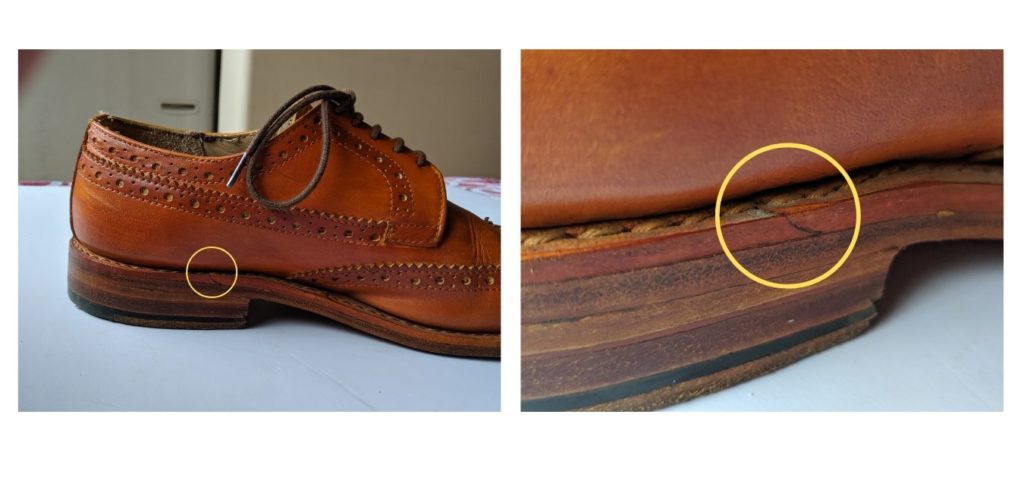
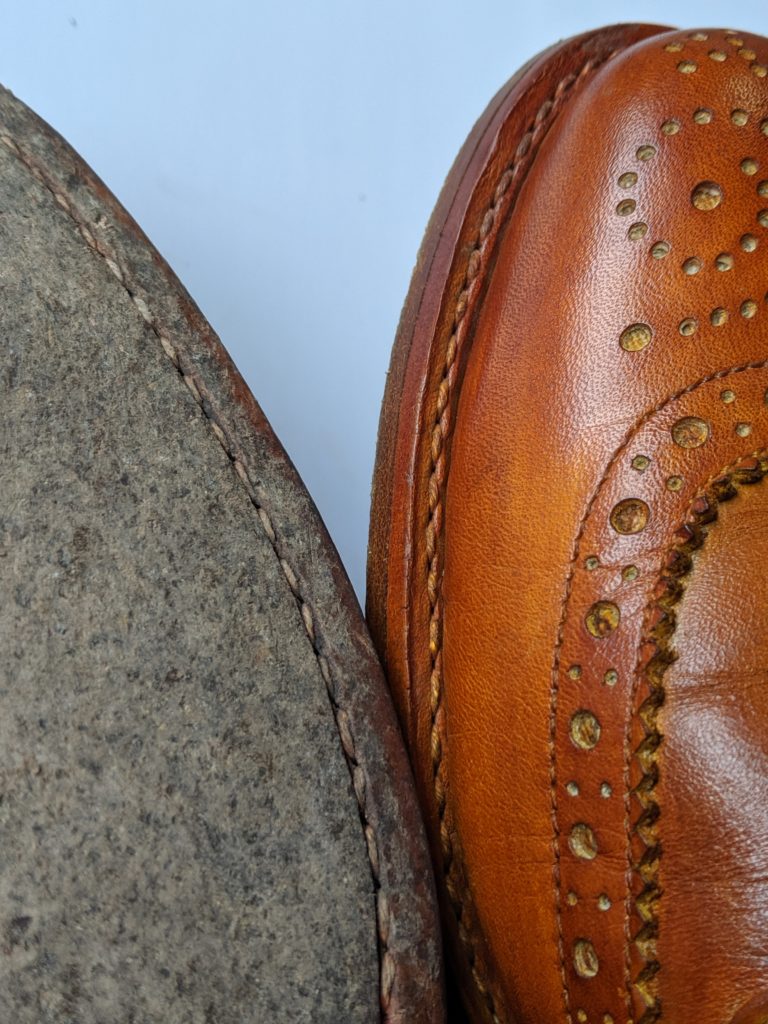
Notice how the stitches are at about the same distance from the edge, and they look similar on the welt and the bottom of the show
Avoid:
- Faux welted shoes / Pre-stitched welts
Due to the popularity of Goodyear welted shoes, many manufacturers use faux welts and decorative stitching on the outside to pass off Blake-stitched shoes or even cemented ones as Goodyear welted.
There are a few ways you can spot this:- The outsole does not extend much beyond the leather upper i.e < 4mm wide
- The distance of the stitches from the edge on the welt and the bottom of the shoe is not the same
- The number of stitches per inch (SPI) on the welt does not match with that on the bottom of the shoe
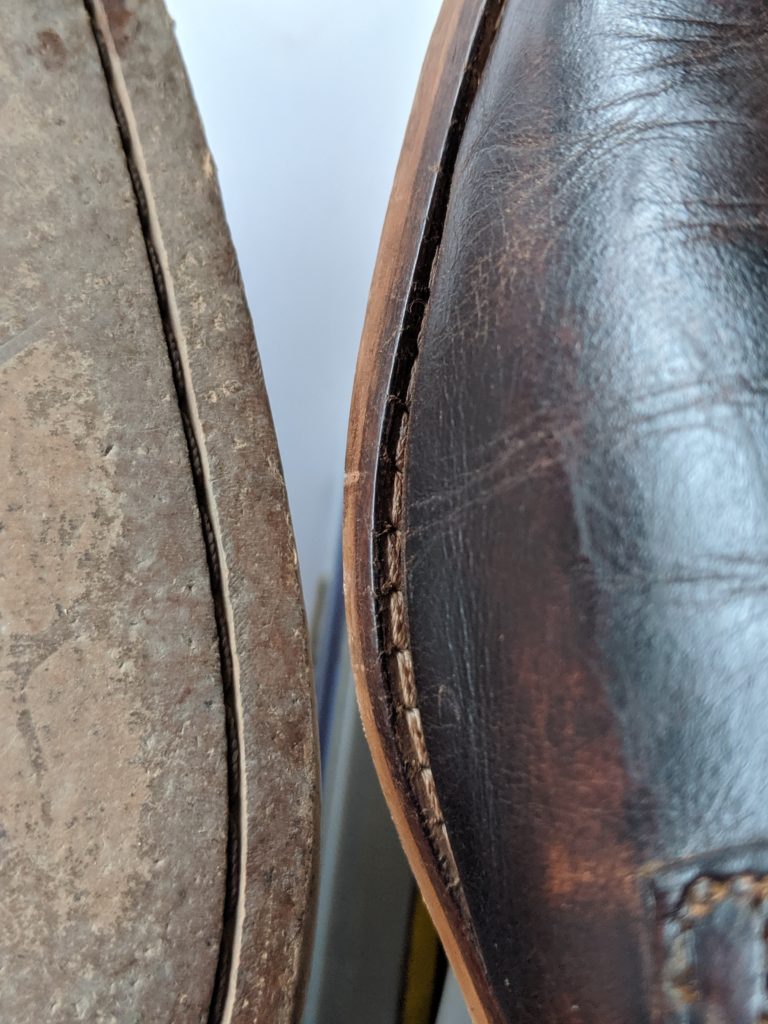
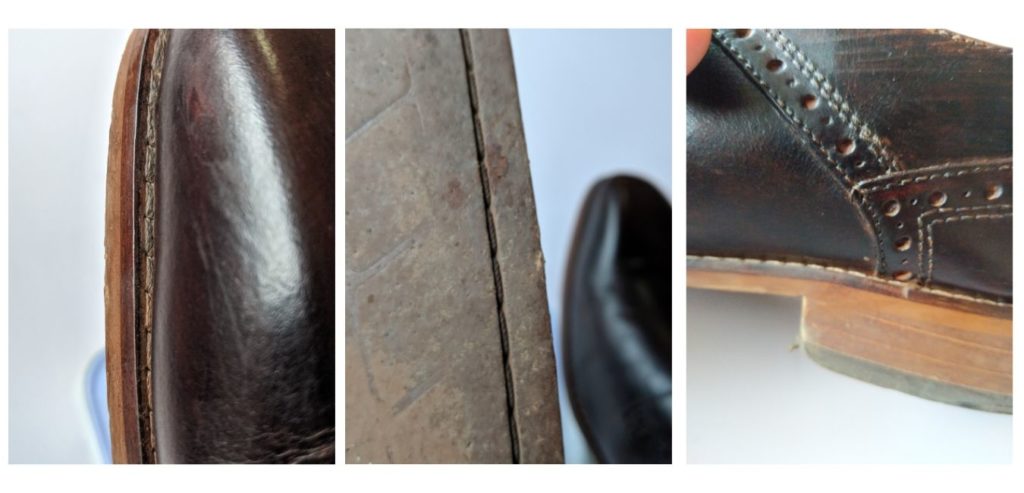
The visible cut (Right) confirms the use of a welt is used but all the above reasons, makes it a pre-stitched welt or faux welt
- Shoes with glued soles. They will wear out quicker, and it will be impossible to replace the soles once that happens. Such glued soles might be appropriate for casual shoe styles but are a bad fit for quality dress shoes
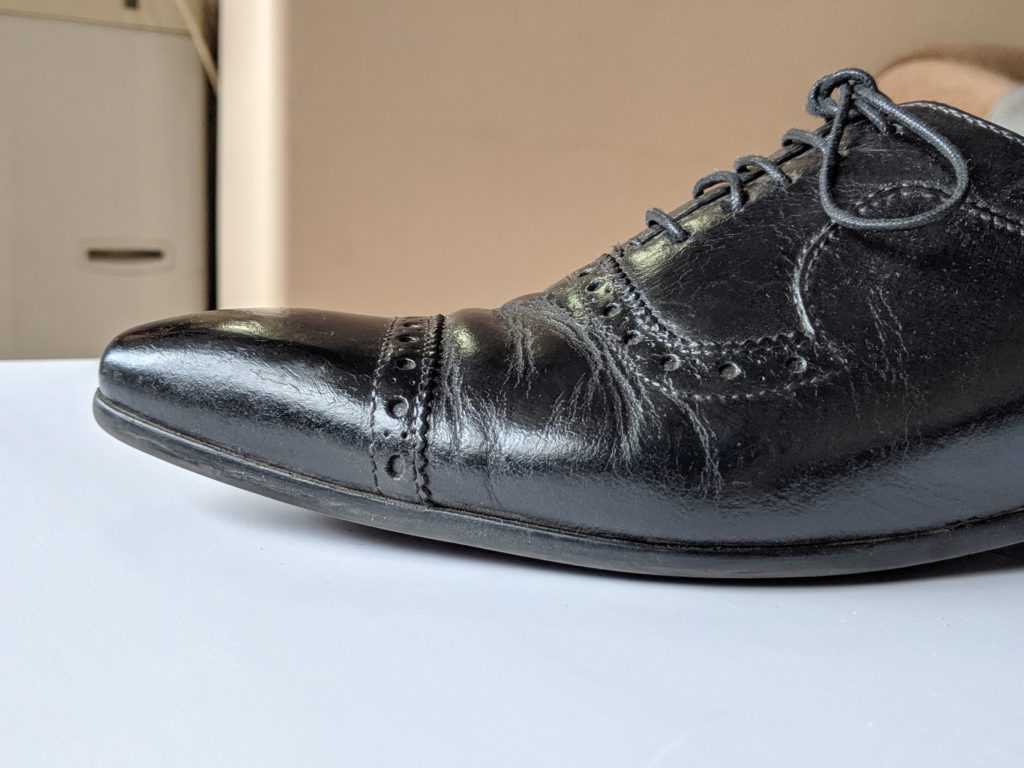
3) High Price
High-quality leathers and sophisticated construction methods can add up costs, which is why the best leather shoes will be expensive. This shouldn’t be your only factor in deciding a shoe’s quality, but it will give you a fair idea about it.
Look for:
- Below is the general trend that I have observed here in India in terms of pricing. It is not an absolute measure of what you may find, please use it strictly as a guide while buying leather shoes
- 1000 – 2500 INR: Low-quality leather or faux leather shoes with cemented soles
- 2500 – 5000 INR: Better leathers, but cemented soles. The shoes in this range are the most common to have decorative faux stitching that makes them look expensive
- 5000 – 10,000 INR: High-quality shoes. Full-grain/top-grain leather shoes will be in this price range. Exacts costs will vary depending on whether they are Blake Stitched or Goodyear welted
Avoid:
- Shoes that are too cheap
By now, I don’t know even need to explain this. If a shoe costs less than 1000₹, you can only imagine the quality corners the brand would’ve cut tp reach that price point - Luxury/designer brands
A good portion of the premium price tag of designer shoes will be due to their brand name. If you have the money to spend, sure go ahead – but ensure that the quality that you get justifies the cost.
Since you’ve read this post, I’m sure it’ll be easy for you 😉
Summary:
Understanding the aspects that make leather shoes high-quality can prove useful every time you’re looking to buy a pair. The main checks should be for high-quality leather uppers and stitched outsoles, but the price of the shoe will also give you an estimate of the costs involved and thereby the attention paid to quality.
Note that even though Full-grain leather and Good-year welting will fetch the highest marks in quality, a lower grade leather should be okay if everything else about the shoe makes up for it – I wouldn’t want you to buy something that lies outside your budget. And in terms of the outsoles, the kind of shoe construction you opt for comes down to preference. Just be aware of the pros and cons of these various types and the uses that you’ll get out of them.
Have you ever used any of these checks? Let me know in the comments.

